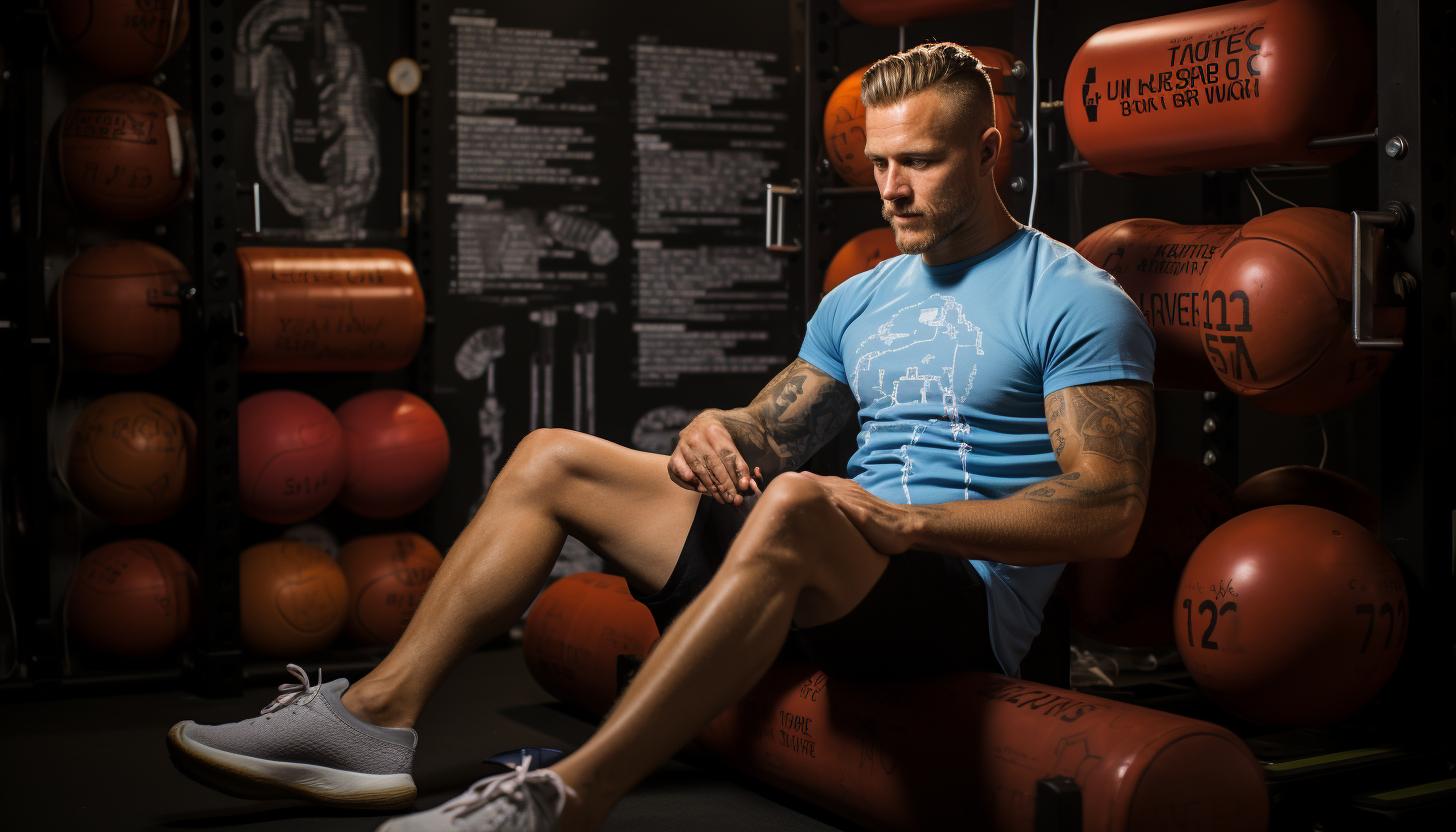The Importance of Rest and Recovery in 5K Training

Are you tired of feeling run down and fatigued during your 5K training? Discover the key to unlocking your full potential by prioritizing rest and recovery.
In this article, we will delve into the science behind how rest enhances performance, explore effective recovery strategies, and highlight the crucial role of sleep in optimizing your training.
Don’t let overtraining and burnout derail your progress. It’s time to take care of yourself so you can conquer every stride with ease.
The Science Behind Rest and Recovery

You might be wondering, what’s the science behind rest and recovery? Well, let’s delve into it.
Rest and recovery are essential components of any training program, including 5k training. Restorative practices provide numerous benefits for athletes by allowing their bodies to repair and adapt following the stress of intense physical activity.
When you engage in strenuous exercise like running a 5k, your body is subjected to various stresses. These stresses can lead to micro-tears in your muscles, depletion of energy stores, and an increase in oxidative stress. Allowing yourself proper rest allows your body to repair these damages and replenish its energy reserves.
Research has shown that rest and recovery are vital for optimizing performance and reducing the risk of injury. During periods of rest, your body undergoes important physiological processes such as muscle protein synthesis, which helps rebuild damaged muscle fibers stronger than before.
Moreover, restorative practices also play a crucial role in managing the impact of stress on recovery. Stress can disrupt sleep patterns, elevate cortisol levels (a stress hormone), and impair immune function. By incorporating adequate rest days into your training regimen, you give your body time to recover from both physical fatigue and mental stress.
How Rest Enhances Performance

Resting and allowing your body to recover after intense exercise can significantly improve performance. During rest, your body undergoes a variety of processes that promote repair and growth, leading to enhanced athletic abilities.
Here are some ways that restorative practices and active recovery techniques can optimize your performance:
– Muscle Repair: Intense exercise causes micro-tears in your muscle fibers. Rest allows these tears to heal, resulting in stronger muscles that are less prone to injury.
– Energy Restoration: Intense exercise depletes glycogen stores in your muscles. Rest enables the replenishment of these energy stores, ensuring you have the fuel necessary for peak performance.
– Hormone Balance: Exercise stimulates the release of stress hormones such as cortisol. Adequate rest helps restore hormonal balance, promoting optimal muscle growth and recovery.
– Mental Refreshment: Rest improves cognitive function and concentration levels, allowing you to maintain focus during training sessions or races.
To maximize the benefits of rest and recovery, incorporate active recovery techniques into your routine. These include low-intensity activities like gentle stretching, swimming, or yoga that increase blood flow without causing additional stress on your muscles.
Strategies for Effective Recovery

Incorporating restorative practices and active recovery techniques into your routine is essential for optimizing performance. When it comes to effective recovery strategies, two key components stand out: active recovery and foam rolling.
Active recovery refers to engaging in low-intensity exercises or movements after a strenuous workout or race. By doing so, you increase blood flow to your muscles, which helps remove waste products and deliver oxygen and nutrients needed for repair. Active recovery can include activities like light jogging, swimming, or cycling. Research has shown that incorporating active recovery into your routine can reduce muscle soreness and speed up the recovery process.
Another valuable tool for effective recovery is foam rolling. Foam rolling involves using a cylindrical device made of foam to apply pressure on specific areas of your body. This technique not only increases blood flow but also helps release tension in your muscles, improve flexibility, and reduce inflammation.
Studies have demonstrated that incorporating foam rolling into your post-workout routine can enhance range of motion and decrease perceived muscle soreness. It’s important to note that while foam rolling can be uncomfortable at times, it should never cause excessive pain or discomfort.
By incorporating both active recovery and foam rolling into your routine, you provide your body with the necessary tools for optimal performance. Remember to listen to your body’s needs and adjust these techniques accordingly.
Happy recovering!
The Role of Sleep in 5K Training

Getting enough quality sleep is crucial for optimizing performance in 5K training. Sleep deprivation can negatively impact various aspects of athletic performance, such as reaction time, decision-making skills, and overall physical endurance.
To ensure you are getting the optimal rest duration for your training needs, consider the following:
– Consistency: Establish a consistent sleep schedule by going to bed and waking up at the same time every day. This helps regulate your body’s internal clock and promotes better sleep quality.
– Duration: Aim for 7-9 hours of uninterrupted sleep each night to allow sufficient time for your body to repair and recover from intense training sessions.
– Sleep hygiene: Create a conducive sleep environment by keeping your bedroom dark, cool, and quiet. Avoid electronic devices before bedtime as they can interfere with your ability to fall asleep.
– Relaxation techniques: Incorporate relaxation techniques such as deep breathing or meditation into your pre-sleep routine to help calm your mind and prepare it for restful sleep.
Avoiding Overtraining and Burnout

To prevent overtraining and burnout, it’s essential to listen to your body and give yourself adequate time to rest and recover. Overtraining can lead to a variety of negative consequences, including an increased risk of injuries and a decline in performance. By managing fatigue effectively, you can optimize your training and reduce the likelihood of these issues.
Preventing injuries is crucial for any athlete, especially those engaged in 5K training. Overtraining places excessive stress on your muscles, tendons, and bones, making you more susceptible to injuries like stress fractures or muscle strains. Rest days allow your body to repair damaged tissues and build up strength, reducing the risk of such injuries.
Managing fatigue is equally important in avoiding overtraining and burnout. Fatigue impairs both physical and mental performance, making it harder for you to perform at your best. By incorporating rest days into your training schedule, you can give your body the opportunity to replenish its energy stores and recover from the demands placed upon it during workouts.
Conclusion
In conclusion, to truly excel in your 5K training, you must embrace the power of rest and recovery. By giving your body adequate time to repair and rejuvenate, you are like a skilled architect meticulously building a strong foundation for success.
Just as a flower needs sunlight and water to flourish, your muscles require rest to grow stronger. So take heed of the science behind it all, employ effective recovery strategies, prioritize sleep, and avoid overtraining and burnout.
Only then will you witness yourself soaring across that finish line with unwavering strength and grace.






